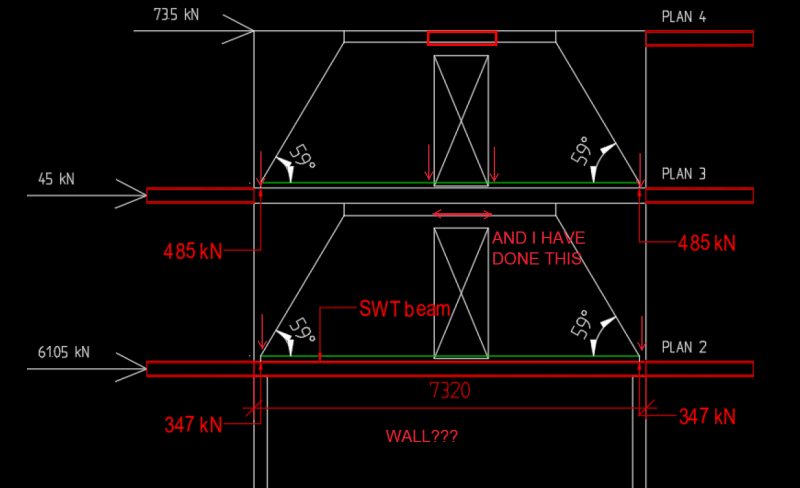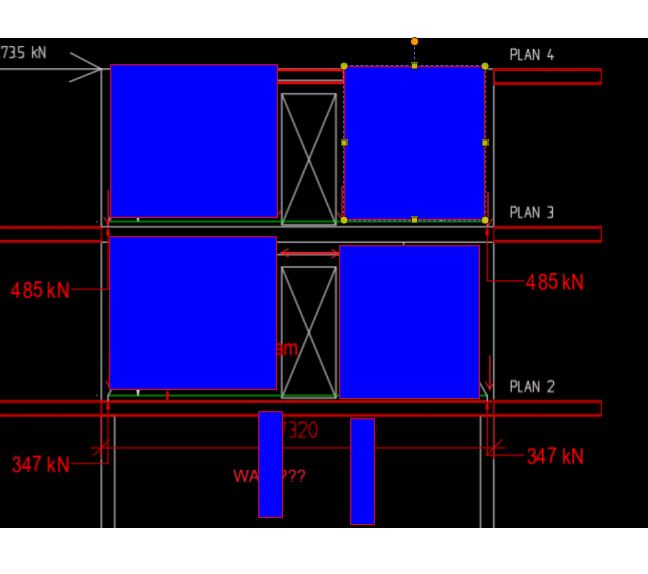Hello everyone,
I am working on design of precast shear walls that have a system as shown in the Figure 2. The system was subtracted from the whole model as shown in Figure 1. SWT beams on Plan 2 (steel beams with an opened top for casting in concrete, Figure 4) will not carry vertical loads from the walls. The vertical loads are planned to go the columns heads through strut and tie model and reinforcement that serves as ties will be placed in the wall under the door. Which mean the beam will not be integrated to the wall for vertical load carrying purpose.
However, accumulated shear force at the base of the lower wall shall be transferred to wind bracers on the outer facads through hollow cored slabs carried by the SWT beam. Which mean the base of the wall need to to be connected to the beam anyway to transfer horizontal force to hollow core slabs.
I have lookup and found a simplified loading system for designing coupled shear walls, Figure 3 and it shows overturning moments at the base of the walls (M1 and M2). At this point I feel really confused. How should I take care of M1 and M2 when the wall and the beam are not integrated for vertical load? Especially for M2, it creates tension of right edge of the door, how can I neutralize that tension when my compression force is already directed to the column head through a diagonal strut. Please find attached the file containing figures stated above.
Thank you so much in advance for any suggestion.
I am working on design of precast shear walls that have a system as shown in the Figure 2. The system was subtracted from the whole model as shown in Figure 1. SWT beams on Plan 2 (steel beams with an opened top for casting in concrete, Figure 4) will not carry vertical loads from the walls. The vertical loads are planned to go the columns heads through strut and tie model and reinforcement that serves as ties will be placed in the wall under the door. Which mean the beam will not be integrated to the wall for vertical load carrying purpose.
However, accumulated shear force at the base of the lower wall shall be transferred to wind bracers on the outer facads through hollow cored slabs carried by the SWT beam. Which mean the base of the wall need to to be connected to the beam anyway to transfer horizontal force to hollow core slabs.
I have lookup and found a simplified loading system for designing coupled shear walls, Figure 3 and it shows overturning moments at the base of the walls (M1 and M2). At this point I feel really confused. How should I take care of M1 and M2 when the wall and the beam are not integrated for vertical load? Especially for M2, it creates tension of right edge of the door, how can I neutralize that tension when my compression force is already directed to the column head through a diagonal strut. Please find attached the file containing figures stated above.
Thank you so much in advance for any suggestion.





